UNIT 3
Stone Masonry
The construction of stones bonded together with mortar is termed as stone masonry where the stones are available in a abundance in nature, on cutting and dressing to the proper shape, they provide an economical material for the construction of various building components such as walls, columns, footings, arches, lintels, beams, etc.
Uses
1) Building foundations, walls, piers, pillars, and architectural works.
2) Lintels, Beams, beams Arches, domes etc.,
3) Roofs and Roof coverings.
4) Cladding Works
5) Dams, light houses, monumental structures.
6) Paving jobs
7) Railway, ballast, black boards and electrical switch
Types of Stone Masonry

Stone masonry can broadly be classified into the following two types:
- Rubble Masonry
- Ashlar Masonry
Rubble Masonry:
The type of stone masonry in which either undressed or roughly dressed stone are laid in a suitable mortar is called rubble masonry. In this masonry the joints are not of uniform thickness. Rubble masonry is further sub-divided into the following three types:
Types of Rubble Masonry
- Random rubble masonry
- Squared rubble masonry
- Dry rubble masonry
Random rubble masonry:
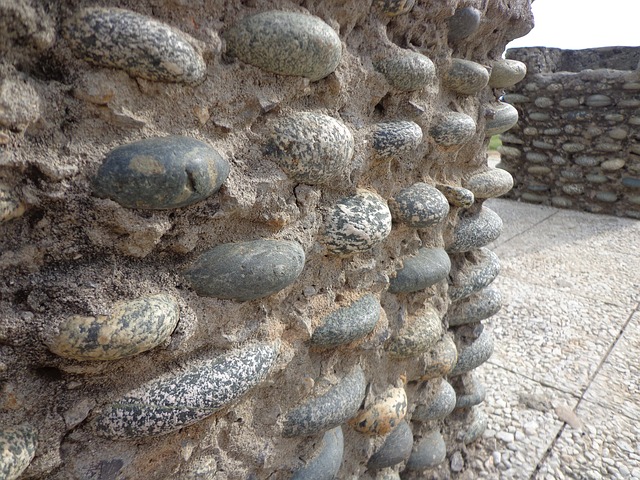
Rubble masonry is the type of stone masonry in which either undressed or hammer dressed stones are used is called random rubble masonry. Further random rubble masonry is also divided into the following three types:
Un-coursed Random Rubble Masonry:
The random rubble masonry in which stones are laid without forming courses is known as un coursed random rubble masonry. This is the roughest and cheapest type of masonry and is of varying appearance. The stones used in this masonry are of different sizes and shapes. Before lying, all projecting corners of stones are slightly knocked off. Vertical joints are not plumbed, joints are filled and flushed. Large stones are used at corners and at jambs to increase their strength. Once "through stone" is used for every square meter of the face area for joining faces and backing.
Applications of Random Rubble Masonry:
Used for construction of walls of low height in case of ordinary buildings.
Coursed Random Rubble Masonry:
The random rubble masonry in which stones are laid in layers of equal height is called random rubble masonry. In this masonry, the stones are laid in somewhat level courses. Headers of one coursed height are placed at certain intervals. The stones are hammer dressed.
Applications of Coursed Random Rubble Masonry:
CRRM is used for construction of residential buildings, go downs, boundary walls etc.
Squared Rubble Masonry:
The rubble masonry in which the face stones are squared on all joints and beds by hammer dressing or chisel dressing before their actual laying, is called squared rubble masonry.
There are two types of squared rubble masonry.
Coursed Square Rubble Masonry:
The square rubble masonry in which chisel dressed stones laid in courses is called coarse square rubble masonry. This is a superior variety of rubble masonry. It consists of stones, which are squared on all joints and laid in courses. The stones are to be laid in courses of equal layers. And the joints should also be uniform.
Applications of Coursed Square Rubble Masonry:
Used for construction of public buildings, hospitals, schools, markets, modern residential buildings etc and in hilly areas where good quality of stone is easily available.
Un coursed square rubble masonry:
The squared rubble in masonry which hammer dressed stones are laid without making courses is called un coursed square rubble masonry. It consists of stones which are squared on all joints and beds by hammer dressing. All the stones to be laid are of different sizes.
Suitability:
Used for construction of ordinary buildings in hilly areas where a good variety of stones are cheaply available.
Ashlar Masonry:
It is the type of stone masonry in which finely dressed stones are laid in cement or lime mortar is known as ashlars masonry. In this masonry are the courses are of uniform height, all the joints are regular, thin and have uniform thickness. This type of masonry is much costly as it requires dressing of stones.
Suitability:
This masonry is used for heavy structures, architectural buildings, high piers and abutments of bridges.
Ashlars masonry is further sub divided into the following types:
Types of Ashlar Masonry
- Ashlars fine or coarse ashlar masonry
- Random coarse ashlars masonry
- Rough tooled ashlar masonry
- Rock or quarry faced ashlars masonry
- Chamfered ashlars masonry
- Block in coarse masonry
- Ashlar facing
A brick bond is a pattern in which the bricks are laid. Brick bonds don’t only apply to the walls but also for brick paving for paths and patios and also for concrete blocks and other kinds of masonry construction.
Brick Bonds play a huge role in maximizing the strength & durability of the structure, bring in uniformity to the structure and composition, and enhance the visual appeal. There are many types of brick bonds and each one has its own unique look, challenges of installation, and structural considerations in the case of walls, this blog discusses the most popular ones.
English Bond
- One of the most commonly utilized variations of brick bonds in masonry works. This bond essentially comprises of alternating courses of headers and stretchers.
- Headers are laid centred over the stretchers in the course below and each alternate row is vertically aligned. To break the continuousness of vertical joints, a quoin closer is used at the start and end of a wall after the first header.
- A quoin close is a brick that is cut lengthwise into 2 halves and used in the corners in brick walls. This type of bond is mainly used to construct strong one brick thickness walls.
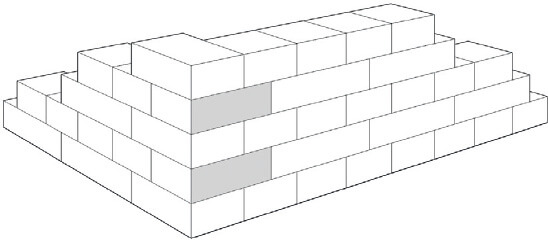
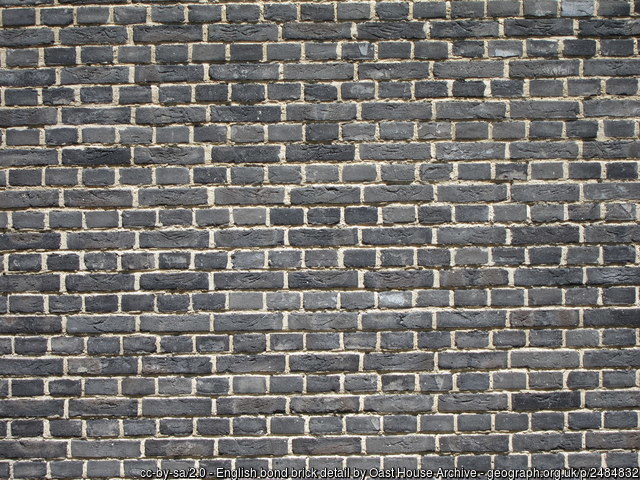
(1) Flemish Bond-
For this type of bond, each course is made up of alternate headers and stretchers. Each header is centered on a stretcher above and below and every alternate course begins with a header in the corner. For breaking the vertical joints in the successive courses, quoin closers are introduced in alternate courses next to the header. This bond can be significantly sub-divided into two diverse types:
- Single Flemish Bond –
A combination of English bond and Flemish Bond. The front exposed surface of the wall is composed of Flemish bong and the back surface is composed of English bond in every single course.
- Double Flemish Bond –
This bond takes a similar appearance both in the front and the back elevations.
Walls with Flemish Bond are complex to erect and demand greater skills.
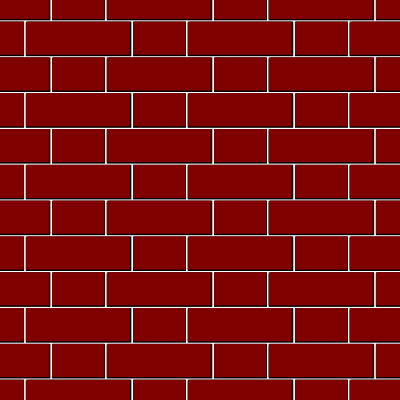
Composite Masonry Walls
These walls are constructed with two or more units such as stones or bricks and hollow bricks. This type of masonry wall construction is done for better appearance with economy.
In composite masonry walls, two wythes of masonry units are constructed bonding with each other. While one wythe can be brick or stone masonry while the other can be hollow bricks. A wythe is a continuous vertical section of masonry one unit in thickness.
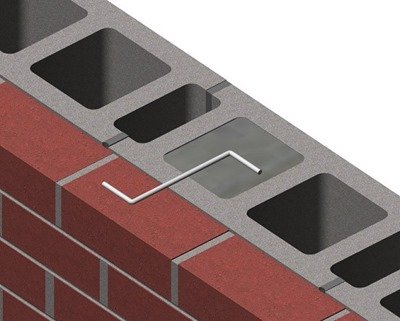
Fig: Composite Masonry Wall
These wythes are interconnected either by horizontal joint reinforcement or by using steel ties.